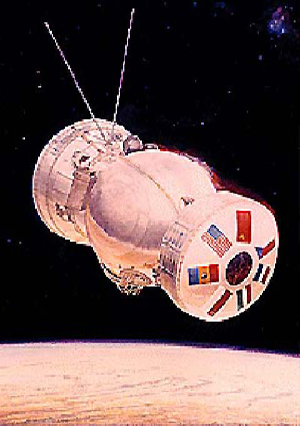Top Qs
Timeline
Chat
Perspective
Kosmos 1129
Soviet biological science spacecraft (Bion 5) From Wikipedia, the free encyclopedia
Remove ads
Bion 5, also known as Kosmos 1129 (in Russian: Бион 5, Космос-1129) was a Bion satellite. It was an international biomedical research mission involving scientists from nine countries, launched on 29 September 1979, at 15:30:00 UTC. Among the experiments was the first attempt to breed mammals in space, which proved unsuccessful. The mission ended after 14.5 days, on 14 October 1979, at 02:24 UTC. The mission had the cooperation of the Bulgaria, Czechoslovakia, East Germany, France, Hungary, Poland, Romania, the United States and the Soviet Union.
Remove ads
Mission
Organisms studied included:
- Rattus norvegicus (Wistar rat)[3]
- Coturnix coturnix (Japanese quail)
- Daucus carota (carrot)
Objectives
Bion 5 mission consisted of various biological studies, including the first mammalian reproduction attempts (rats) in space, which ended up not succeeding. Experiences NASA were designed to study the effects of radiation on mice, quail embryos and some plant specimens.
Studies on the effect of microgravity were also performed on the muscles and bones of rats and avian embryogenesis was studied in space. the effects of microgravity on plant tissues were investigated using carrots and carrot cancerous tissue to study the effects of space flight on the growth and development of plants. As in the previous mission, 30 rats for the species Rattus norvegicus were sent physiological studies; Seven additional rats were used in embryological experiments.
Remove ads
See also
References
Bibliography
External links
Wikiwand - on
Seamless Wikipedia browsing. On steroids.
Remove ads

